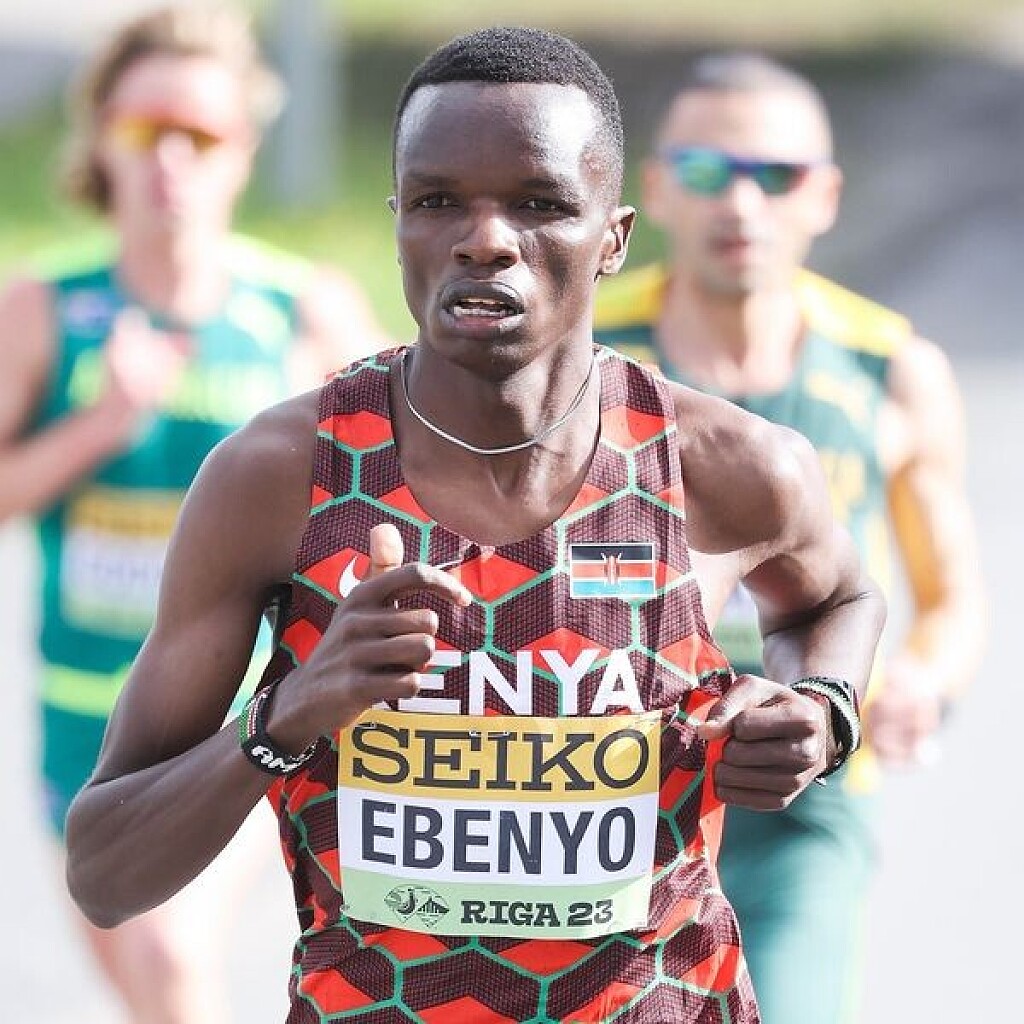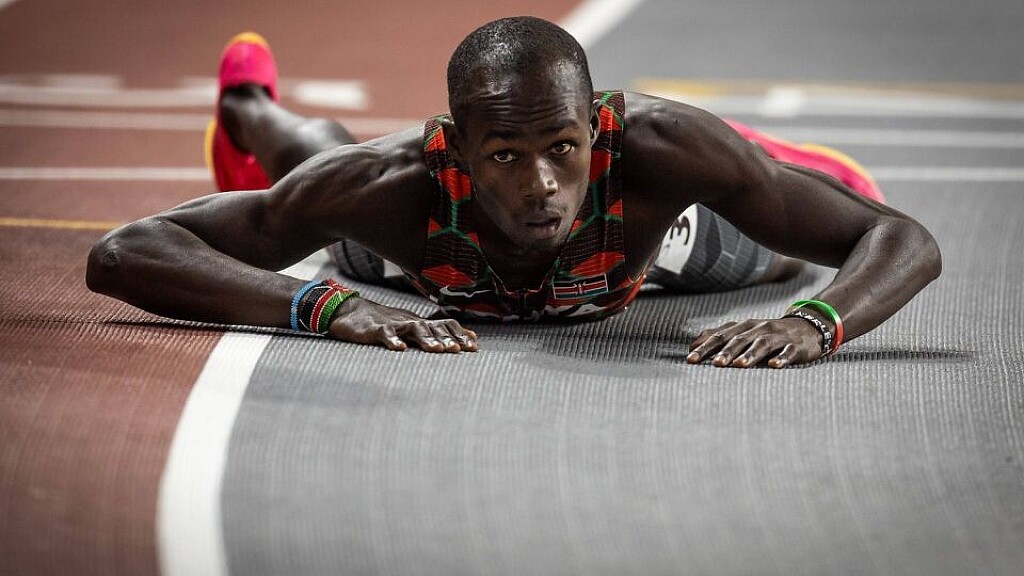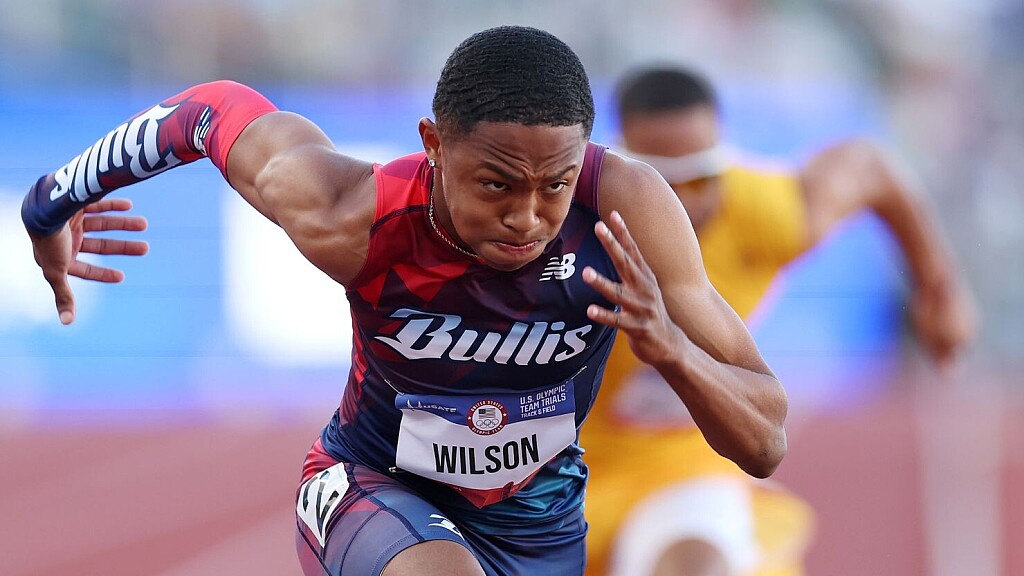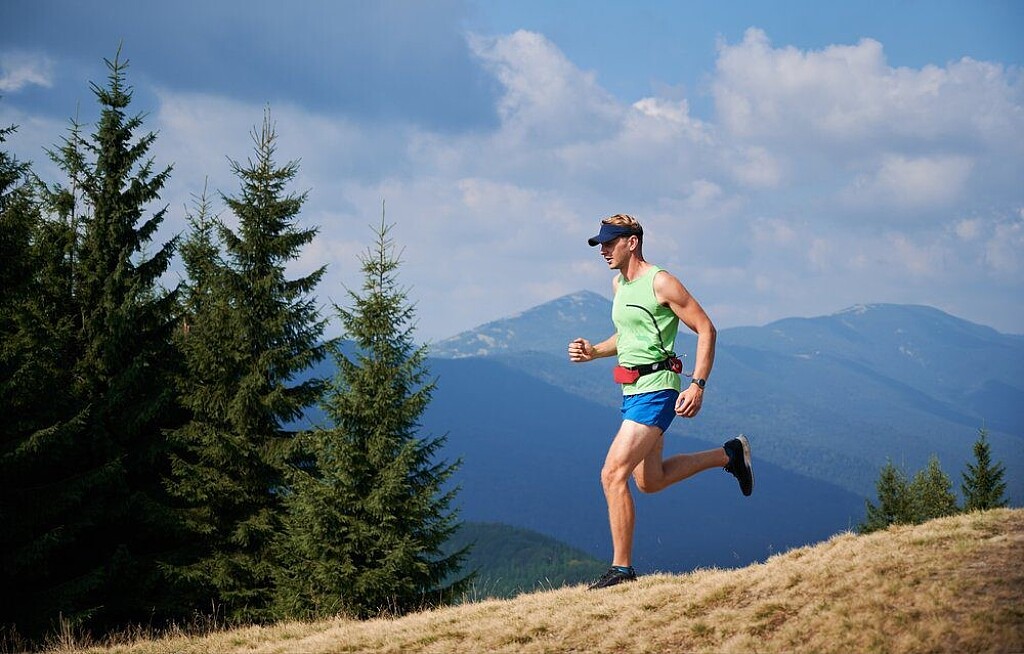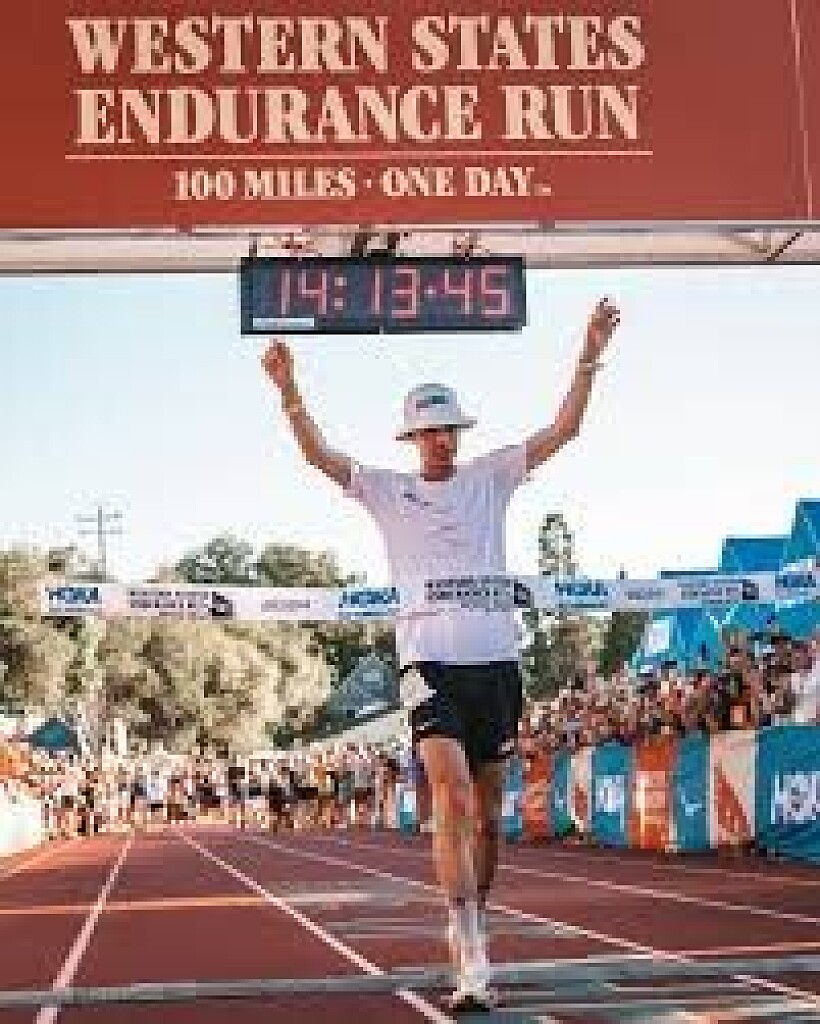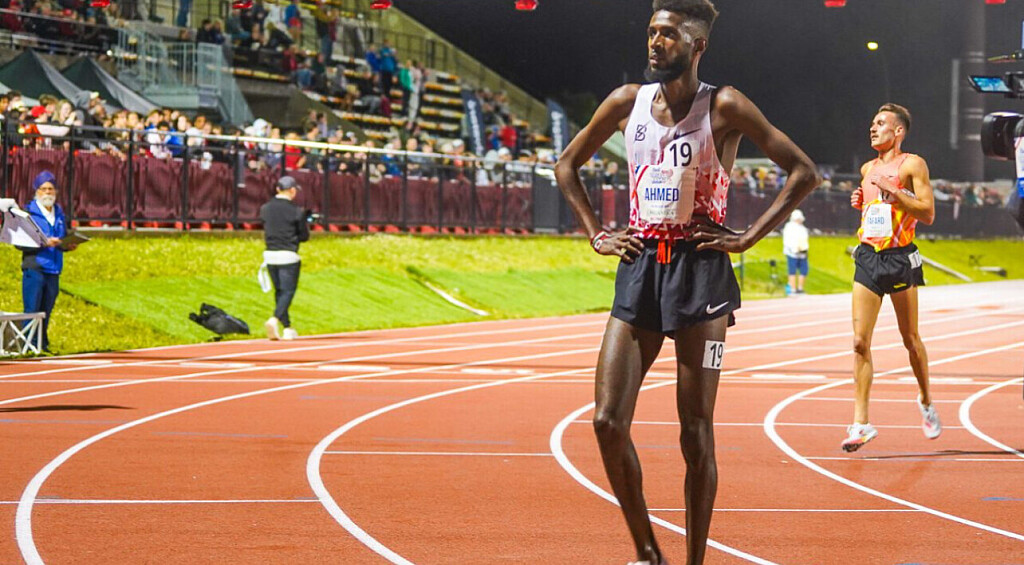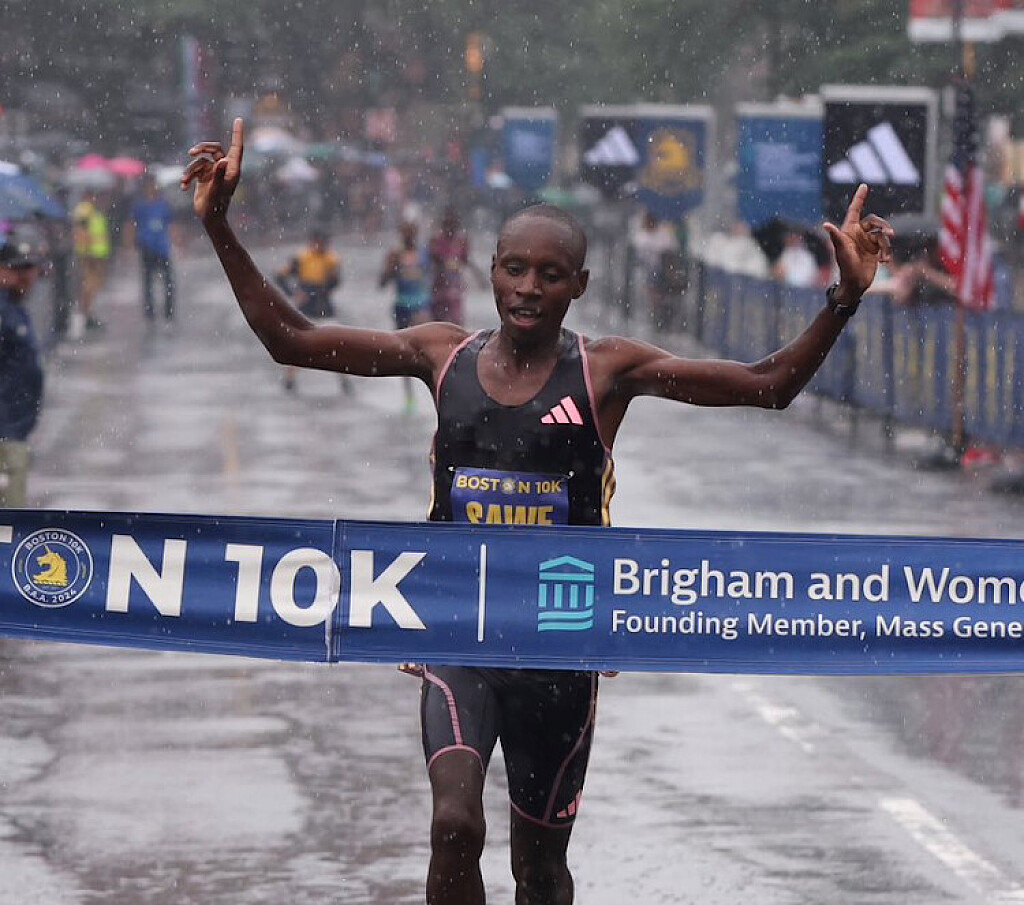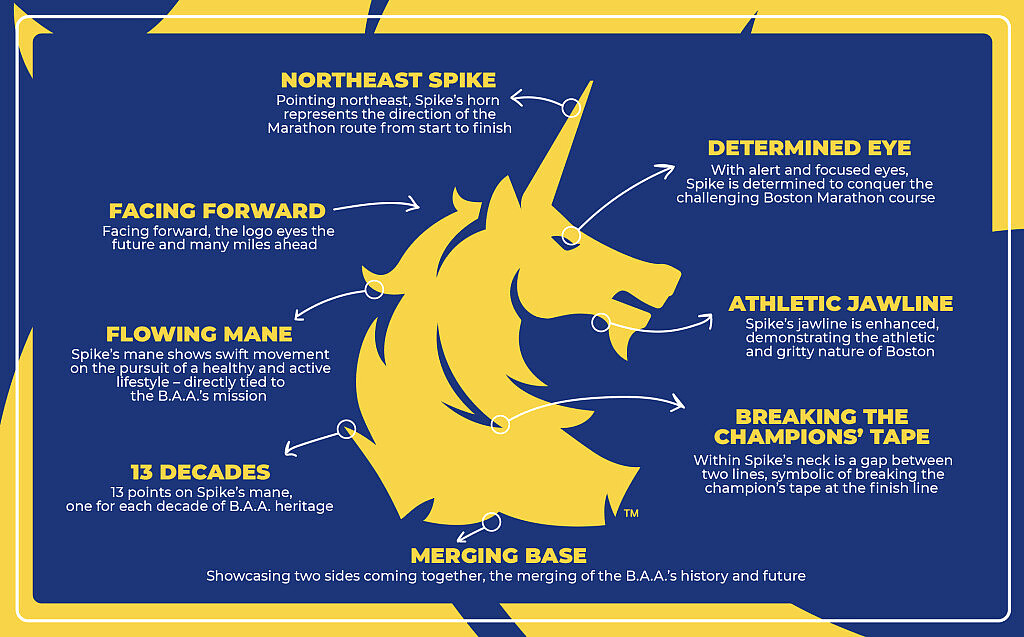Running News Daily
Top Ten Stories of the Week
7/6/2024
These are the top ten stories based on views over the last week.
Elite Athlete Fields Set for 55th Running of AJC Peachtree Road Race
Two of the top road racers in the world will face off in the 55th Running of the Atlanta Journal-Constitution Peachtree Road Race, organizers announced today.
In his first season of competition in the U.S., Sabastian Sawe comes to Atlanta ranked as the #1 road racer in the world, based on distances from 10K to the half marathon. The 29-year-old Kenyan brings a personal best of 26:49, the second-fastest 10K time in the world last year, and the reigning World Half Marathon Champion sits on top of the 2024 leaderboard for fastest half marathon in the world so far this year, 58:24.
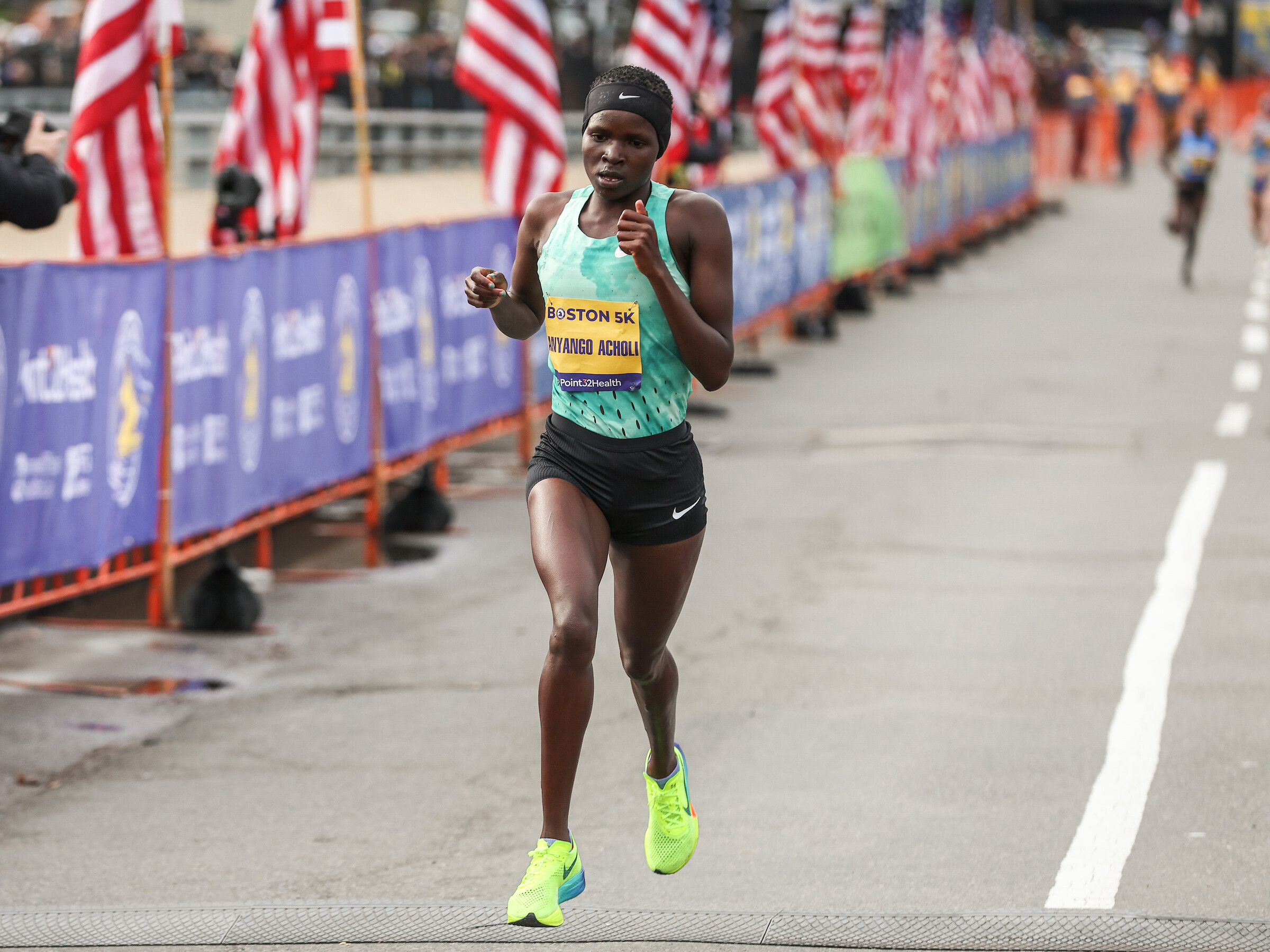
In a rematch of those 2023 World Half Marathon Championships, Sawe will face Kenya’s Daniel Ebenyo, 28, who earned a silver medal in that race last fall. Ebenyo was leading until Sawe drew even with a few hundred meters remaining, going on to a four-second victory. “We pushed each other to a good result,” Ebenyo said afterward.
Ebenyo, the 2023 World Championships silver medalist at 10,000 meters on the track, is ranked #1 in the world for 10K on the roads. His personal best of 26:58 is second in the Peachtree field only to Sawe. Both will be making their Peachtree debuts.
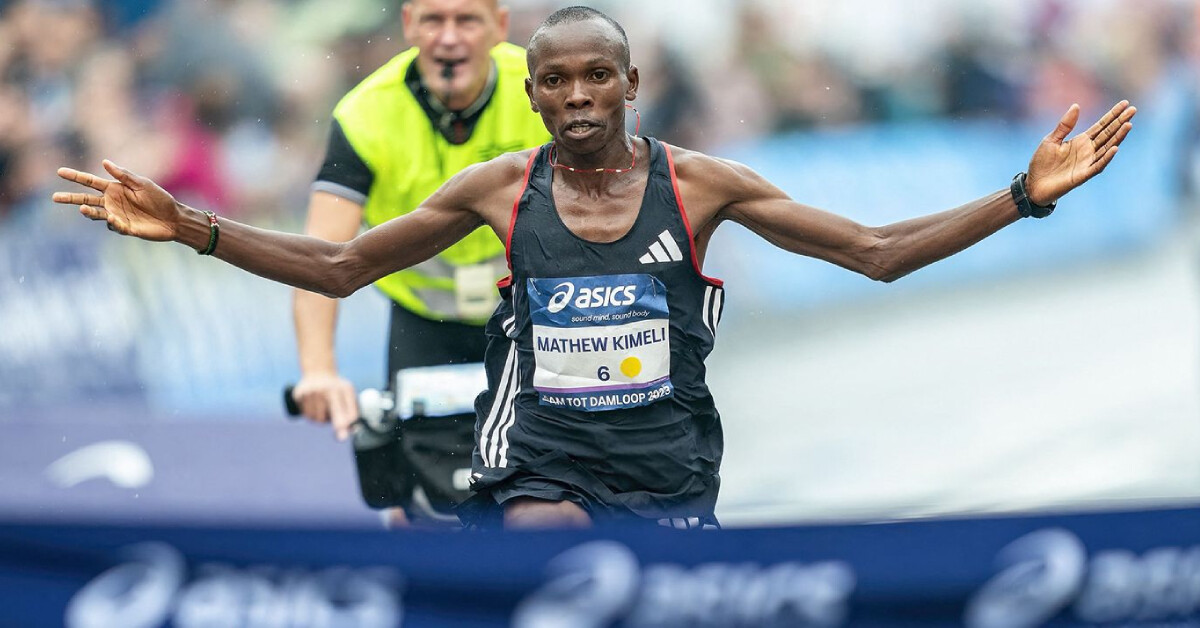
Among the other top athletes in the field are Mathew Kimeli of Kenya (27:07) and Boniface Kibiwott (27:13) of Kenya and Jake Robertson of New Zealand (27:28). Returning to the Peachtree for the 10th time is American Elkanah Kibet, 41.
In the Shepherd Center Wheelchair Division, course record-holder Daniel Romanchuk of the USA (right) will have a chance to make history as the first athlete in the men’s open division to win the Peachtree seven times. Romanchuk, 25, has won Peachtree for the past six years in a row, but will have to fend off American Aaron Pike, a six-time Paralympian, and Josh Cassidy of Canada, a two-time Peachtree champion.
he field for the women’s footrace is headlined by 24-year-old Emmaculate Anyango, whose 10K personal best of 28:57 makes her the second-fastest woman in history at the distance. The Kenyan is currently ranked as the #4 road racer in the world.
Countrywoman Chelangat (30:01) will challenge her. Anyango and Chepkoech, who is tied for 8th-fastest woman in history, will be making their Peachtree debuts, while Chelangat is back after finishing second here last year.
Also returning will be Susannah Scaroni (left), the 2020 Paralympic gold medalist at 5,000 meters. The 33-year-old Peachtree course record-holder will be seeking her fourth win here since 2018 and third in a row. Scaroni missed the spring marathon season with an overuse injury but is apparently back to form: She set a World Record for 5,000 meters on the track in early June.
The winner of each professional division will receive $12,500.
For the first time, the Peachtree will feature an Elite High School Division, giving the best young distance runners in Georgia the chance to experience professional road racing first-hand. The field is composed of the top 20 boys and top 20 girls from the classes of 2025, 2026 and 2027 residing in Georgia who accepted an invitation from Atlanta Track Club.
The 55th Running of the Atlanta Journal-Constitution Peachtree Road Race will be held Thursday, July 4, in Atlanta, Georgia, with 50,000 runners and walkers making their way from Lenox Square to Piedmont Park in the world’s largest 10K. The event will be livestreamed on AJC.com and on the AJC News app beginning at 6 a.m., with Lewis Johnson, Carrie Tollefson and Amanda McGrory leading the broadcast team.
(07/02/24) Views: 176Running USA
Zablon Ekwam reveals specific target ahead of making Olympic Games debut
Zablon Ekwam has revealed what he is targeting specifically as he looks to make his debut at the Paris 2024 Olympics.
Zablon Ekwam, an officer in the Kenya Army, has opened up on his specific target as he gears up for his Olympics debut at the Paris Games later this month.
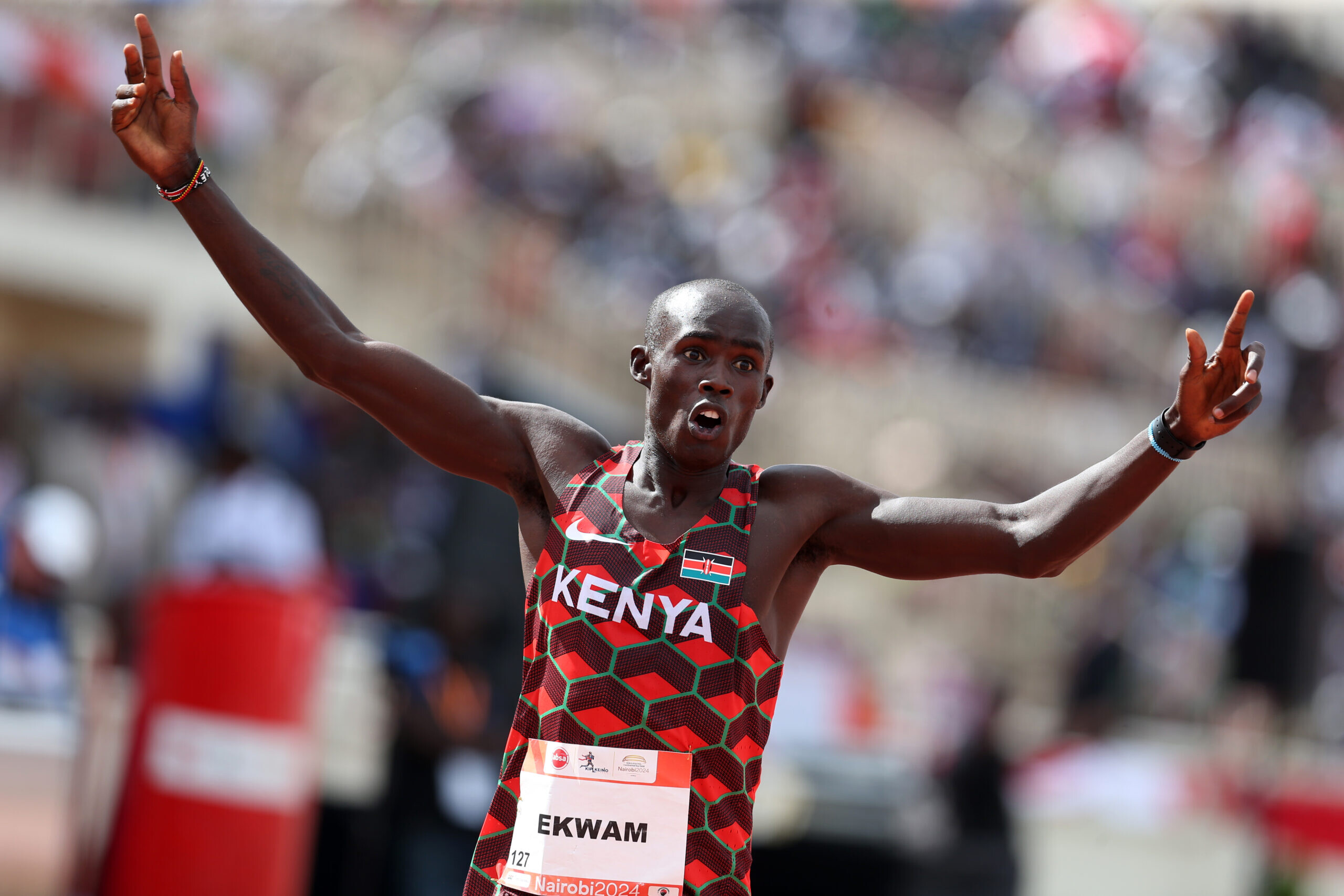
Ekwam qualified for the event in the 400m at the Kip Keino Classic, clocking 44.69 to cross the finish line fourth. The qualification time for the men’s 400m at the Olympics is 45.00 and deadline for qualification was June 30.
The 26-year-old now plans to go to the Olympic Games and impress, looking to better his time. Ekwam disclosed that his main plan will be to get to the final of the 400m, this being his first time at the global showpiece.
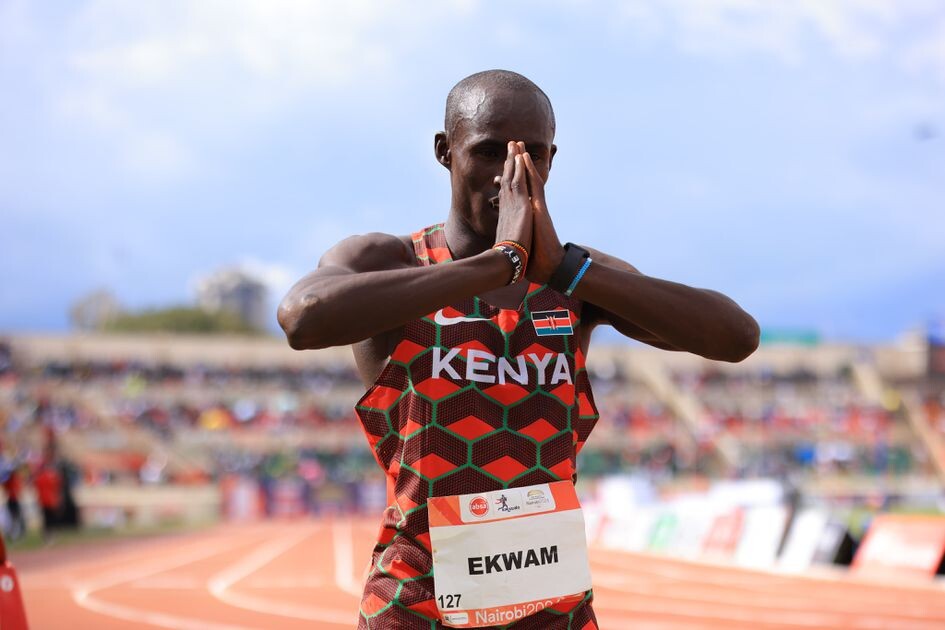
“We are going to the Olympics with no pressure because I just want to improve my personal best time. My target is to get a personal best time in the final,” Ekwam said.
The sprinter says his body has been responding well, the reason behind the silver medal in the men’s 4x400m relay at the Africa Senior Athletics Championships.
Ekwam was sick at the World Athletics Relays in the Bahamas but managed to bounce back stronger as he looks to make an impact at the event.
He added that every athlete always looks to compete at the Olympic Games and that’s a golden opportunity that he does not take for granted.
“Olympics is the climax of any athlete in the world or anyone who is playing any game…being at the Olympics is what everyone is fighting for. Being one of them, I’m very happy to be there,” he said.
“From Kip Keino we had very many races, we went to the World Athletics Relays in the Bahamas where I fell sick and didn’t compete. When I came back, we went to the Africa Senior Championships which concluded a few days ago.
“My body was responding well that’s why we came with the silver medal…I didn’t compete in the 400m since I didn’t participate at the national trials.”
(07/02/24) Views: 161Abigael Wuafula
Wilson, at 16, becomes youngest male USA track Olympian
Quincy Wilson, at age 16, could become the youngest American male athletics competitor to appear at an Olympics as a member of the 4x400m relay pool at Paris.
Wilson finished sixth in the 400m final in 44.94secs, missing out on an individual spot, but USA Track and Field's relay selectors delivered the news Sunday he was in the relay group.
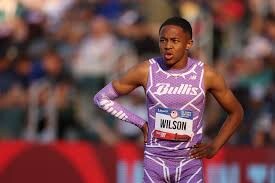
"WE GOING TO THE OLYMPICS," Wilson posted on Instagram.
The previous youngest US athletics competitor at an Olympics was Jim Ryun, who was 17 years and 137 days when he ran at the 1964 Tokyo Olympics.

Wilson, about to start his junior year at Bullis School in Potomac, Maryland, twice broke the under-18 world record for 400m during last week's US trials in Eugene, Oregon.
He broke the age group world record with a run of 44.66secs in the preliminary heats, then lowered that two-day-old mark with a 44.59-second effort in the semi-finals.
(07/02/24) Views: 159AFP
Three workouts to help you dominate the downhills
Downhill running will help you build unshakeable leg strength, transferrable to race-conquering performances over any terrain.
Running downhill might sound easy, but it’s a leg-burning challenge that can humble even the toughest uphill champs. Replace one of your speed sessions with one of these downhill workouts and watch your performance soar, even if you’re gearing up for a flat race.
Downhill running triggers eccentric muscle contractions, where your muscles lengthen to support your body. This type of training boosts strength in your quads and hamstrings, enhances running efficiency (even on flat terrain) and improves stability and balance.
1.- Downhill repeats
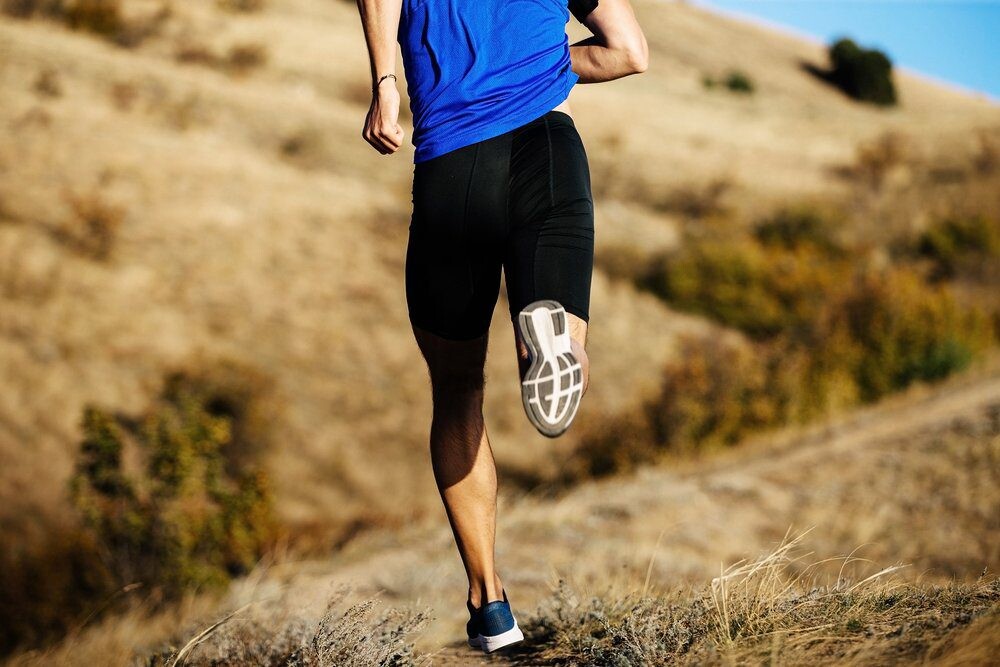
For this workout, find a hill that takes up to two minutes to run down: adjust the time according to your ability and experience. If you have a race coming up, try to find a descent that mimics the terrain you’ll be running on.
Warm up with 10 minutes of very easy running and some dynamic stretches or drills.
Start this session at the bottom of your hill, and walk up the hill at an easy pace to your starting point.
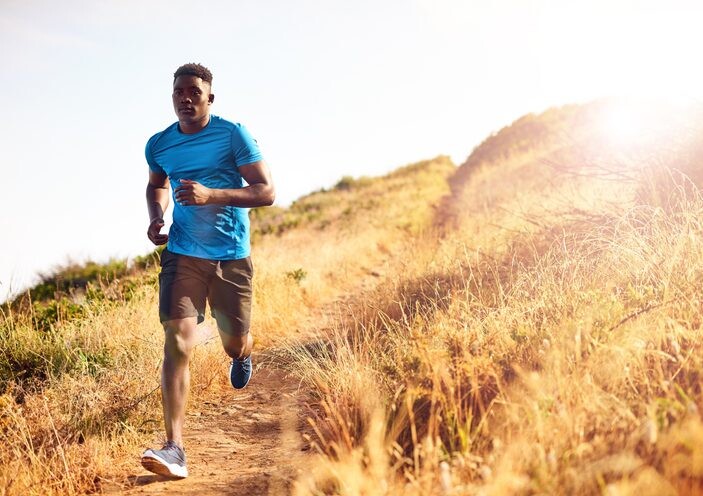
For your first interval, run easily down the hill, keeping your focus on moving smoothly and keeping track of how long it takes you to get to the bottom. Walk back up the hill for recovery. On the second interval, try to beat your first time by a small margin.
Repeat this five to seven times, each time trying to be slightly faster than the previous interval.
Cool down with five to 10 minutes of very easy running.
2.- Iron legs workout
Strong legs equal speedy hill running, both up and down. This workout will leave you weak at the knees—and will build toughness and strength over any terrain.
Warm up with 10 to 15 minutes of very easy running.
Run uphill at an easy pace for one to two minutes, depending on the size of your hill and your experience level. Rest for 30-60 seconds.
Run down the hill as hard you feel comfortable and in control, stopping where you started the uphill. Rest for 30-60 seconds.
Repeat six to 10 times depending on ability—add repeats as you get stronger.
Cool down with 10-15 minutes of easy running.
3.- Downhill fartlek session
Find a downhill training route with a mixture of terrain, including a few 200-400m slopes at roughly a three to six per cent gradient. Don’t worry if you don’t know exact distances or measurements—the idea is to challenge your legs and develop stability over a variety of surfaces.
Warm up with five minutes of very easy, mostly flat running, followed by 5 minutes of medium hard running.
Run six to eight downhill sections, increasing your effort level to a 7 or 8. Follow each repetition with two or three minutes of easy running to recover.
Cool down with five to 10 minutes of very easy running.
Make sure to follow a harder running day with a rest day or very easy running. Downhill running can be slow and challenging at first—practice and consistency is key here, and you’ll reap rewards quickly.
(07/03/24) Views: 148
Keeley Milne
Research Confirms Rotating Running Shoes Could Save You From Injuries—Here’s How Your Body Benefits
Having a shoe collection is not a frivolous obsession. Here’s how you could possibly benefit from having more than one pair of running shoes.
Once you’ve found yourself the perfect pair—you know the ones you want to spend every run in—it’s kind of hard to give them up. However, doing so could actually work to your advantage by keeping you healthy and strong for each run.
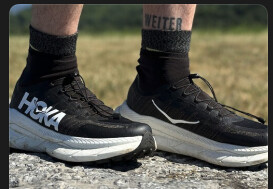
“These days, a lot of people use one shoe for everything, and that puts you at risk for injury,” says Priya Parthasarathy, D.P.M., spokesperson for the American Podiatric Medical Association and partner at USFAS in Silver Springs, Maryland. Running, walking, and weightlifting all require different demands of your feet, so you’ll want to wear different shoes for these activities, she says. Plus, wearing one shoe for all of your workouts can increase the wear on the shoe, so they won’t last as long as you want.
That’s where having a running shoe rotation becomes very helpful. Research and experts back up this idea, and it’s especially helpful to have a shoe rotation if you’re training for a long distance race like a marathon. Here’s what you need to know in order to build a running shoe rotation that meets all of your needs.
Why do you need a running shoe rotation?
Naturally, running places stress on multiple parts of the body, including muscles, bones, and tendons, which can be good for you provided the stress is not too large or frequent that you can’t recover fast enough, says Andrea Myers, D.P.T., who owns a sports performance practice located in Westport and Ridgefield, Connecticut.
”We know from many research studies that different running shoe properties expose the body to different stressors,” Myers says. “We know that minimalist shoes—those with a low or zero drop, flexible sole, and minimal to no stability features—increase the demands on the ankle, foot, and calf muscles, as compared to shoes with a higher drop, which increase the demands at the knee but reduces the demands at the foot and ankle.”
A carefully crafted shoe rotation can possibly offset some of these demands.
To identify characteristics that might contribute to the development of running related injury, a 2013 research study published in the Scandinavian Journal of Medicine and Science in Sport followed 264 runners over the course of 22 weeks. The study found runners who used more than one shoe, a term which they coined “parallel use,” had a 39 percent lower risk of injury. This suggests having more than one pair of running shoes can help you ward off injury.
The reasoning behind it, if you have a cushioned shoe and you let a shoe sit for 24 to 48 hours, the foam in the shoe can de-compress before your next run, says Parthasarathy.
How many shoes do you need in your rotation?
If you’re just starting out, you don’t have to worry about rotating your running shoes, instead, invest in one good pair of running shoes. Parthasarathy recommends finding a shoe with a flexible toe box, firm heel cup, and removable insoles. The one shoe should overall be comfortable to you.
The seasoned recreational runner who runs three to four miles, three days per week, does not need a rotation of four different shoes either, says Myers. Instead, Myers recommends two pairs of shoes that you can rotate every run.
For marathon runners, racking up 35 to 60-plus miles a week with a variety of workouts (easy, long, and speed runs) on their calendars, Myers recommends keeping a shoe rotation of three to four pairs of shoes. This can include one to two pairs of shoes for easy runs and speed workouts, and one pair of shoes for long runs that can handle a variety of different paces. Your long run shoes can also double as a performance trainer, or a lightweight daily trainer, Myers says.
What types of running shoes can you add to your running shoe rotation?
Here are three different types of shoes you can consider adding to your collection, according to Myers:
Daily Trainer: These shoes are primarily for easy running, but can also handle different paces. you can use them to run strides or up-tempo long runs. Good examples of daily trainers include: the Brooks Ghost 15, Saucony Ride 17 or Guide 17, Nike Vomero 17, or Hoka Clifton 9.
Performance Trainer: Best for speed workouts, performance trainers are lightweight shoes that perform best at faster paces and can double as daily trainers as long as you feel comfortable in wearing them for longer distances. Plus, they tend to be more affordable than top-end race performance shoes. A few styles to consider include: Saucony Endorphin Speed 4, Topo Cyclone 2, Mizuno Wave Rebellion Flash 2, and Brooks Hyperion Max.
Racing Shoes: Commonly referred to now as super shoes, racing shoes tend to be more expensive and less durable, considering some shoes have a life expectancy of about 100 to 150 miles. This is why you shouldn’t do the bulk of your training in super shoes, instead you should take them out for a test run or two to ensure they’ll meet all your comfort needs on race day. Saucony Kinvara Pro, Asics Superblast, Adidas Adizero Prime x 2 Strung, and On Cloudeclipse are a few super shoes to consider.
How to find the right shoe to add to your rotation?
Before adding any a shoe to your rotation, you should consider if the shoe is a good fit for your foot arch (flat arch, high arch, or medium arch), running gait (neutral, pronated, or supinated), shoe size, preferred comfort level, and the terrain (treadmill, pavement, or trail) you’ll run on.
“Building a running shoe rotation, especially if you run on different terrains, is important because the shoe wears in different ways,” says Parthasarathy. Meaning where you run will influence some of the characteristics you look for in a shoe. For example, running on hard pavement will require increased cushioning, whereas trail running calls for more stability and traction, she explains.
If you want to change the type of shoe you’re training in, then the recommendation is to ease into the number of miles you try in the new shoe (i.e., don’t go for a long run in a drastically different shoe).
You may experience some soreness if you transition to a different type of shoe, however, you shouldn't experience pain that lasts for days or interferes with your normal running gait pattern on subsequent runs, Myers adds.
Lastly, you’ll want to get rid of your running shoes every so often due to wear and tear that may go unnoticed. ”We recommend you replace your running shoes, especially if you’re doing long distance running every six months or 300 to 500 miles, depending on how hard you are on them,” says Parthasarathy. If you can fold or bend your shoes in half, it’s often an indication the structure of the shoe and cushioning has been broken down, and it’s time for a change, she adds. As mentioned, the new high performance racing shoes tend to have a shorter shelf life when it comes to mileage.
Who should avoid rotating running shoes?
There’s no need to rotate your running shoes if you’re only running a couple of times a week because you’re likely not racking up enough miles to overstress your tissues, says Myers.
Also, don’t rotate running shoes if you have specific biomechanical or orthopedic needs due to injury, foot structure or shape. For example, runners who have arthritis that affects the big toe, a.k.a, hallux limitus, should prioritize running in shoes that can address this condition, which there are few of, Myers says.
(06/29/24) Views: 124Netflix series ‘SPRINT’ brings speed, drama and glory
The highly anticipated Netflix sports series ‘Sprint’ comes at the perfect time – both for the sport and for the digital age – according to multiple world champion Noah Lyles.
‘Sprint’ takes viewers on an exhilarating journey through the highs and lows of athletes’ lives as they battle it out for gold at the World Athletics Championships Budapest 23.
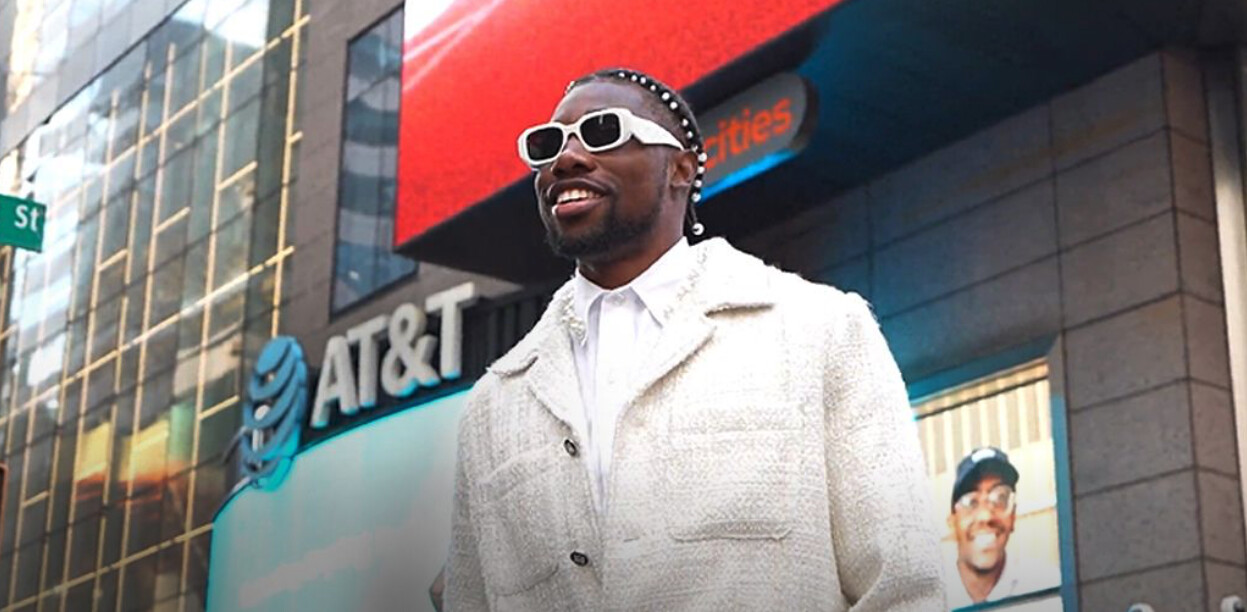
'Sprint’ shines a particular spotlight on the rivalry between Lyles, 2022 world 100m champion Fred Kerley and Olympic champion Marcell Jacobs in the lead-up to last year's World Championships. The series not only showcases the athletes’ personas, it also delves into their lives off the track.
It reveals, for example, how Lyles – one of several athletes featured across the six episodes of ‘Sprint’ – overcame serious health concerns in his teens to become the poster boy for sprinting. The growth and evolution of world 100m champion Sha’Carri Richardson is another key storyline throughout the series“Being part of ‘Sprint’ was an incredible experience,” said world 100m, 200m and 4x100m champion Lyles. “When I imagined the day where a docuseries would be created, I didn’t always envision me being the first person it would be about.”
Earlier this month, the series trailer was beamed across giant screens in New York’s Times Square ahead of an exclusive pre-screening at the Nasdaq Building in New York, where some of the stars of the show, along with other key figures in the sport, were treated to episodes one and five.
The full series is set to land on the Netlfix streaming platform and screens around the world on 2 July.
Speaking at the pre-screening, Lyles said that this series comes at the perfect time for the digital age that athletes are living in.
“We are rockstars in the top 1% and we live in the age of technology and social media,” he said. “It’s a part of our lives and we need an example of how the sport can go with it.”
Executive Producer Paul Martin expressed his enthusiasm and pride for the project. “It felt like a gift,” he said. “We’re incredibly grateful to be able to go into this world. It felt like we really wanted to go above and beyond to make the best version that we could. There was just something about doing justice to this sport and what these athletes put themselves through. World Athletics opened the door for us, for whatever we needed to get this series done.”
Ato Boldon, the 1996 Olympic 200m silver medallist, lauded the producers of the series, and forecasted that it will help expand the oldest sport in the world.
“We know we have some of the best athletes in the world, but we also know we have some of the best personalities in the world,” he said. “I look at this and say that this is going to open up a range of fans who casually follow these athletes, it’s going to grow our audience and engage fans that we didn’t even know we could get.”
(06/29/24) Views: 110
World Athletics
2024 Western States 100 Results: Walmsley Wins a Fourth Time While Schide Rocks the Women’s Field
For hours, Katie Schide chased ghosts. For hours, Jim Walmsley and Rod Farvard chased each other. And in the end, after 100 courageous, gutsy miles at one of the world’s most iconic ultramarathons, it was Schide and Walmsley who won a fast, dramatic 2024 Western States 100.
Schide, an American who lives in France, was on pace to break the course record until late in the race, while Americans Walmsley and Farvard battled throughout most of the second half of the race, alternating the lead as late as mile 85.
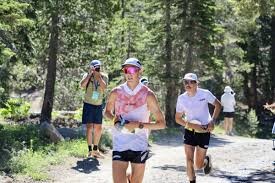
Schide’s winning time was 15:46:57, just over 17 minutes behind Courtney Dauwalter’s 2023 course record, almost an hour faster than her own time last year, and the second fastest women’s time ever. Walmsley, meanwhile, won his fourth Western States in 14:13:45, the second fastest time ever — only behind his own record of 14:09:28 that he set in 2019.
Second and third in the men’s race came down to an epic sprint finish on the track between Farvard and Hayden Hawks , who finished in 14:24:15 and 14:24:31, respectively.
In the women’s race for the podium, Fu-Zhao Xiang (pre-race interview) finished second in 16:20:03, and Eszter Csillag took third for the second time in a row, in 16:42:17.
Both races featured one of the deepest and most competitive fields in race history, with the men’s top five all coming in faster than last year’s winning time, and the women’s top 10 finishing just under 40 minutes faster than last year’s incredibly competitive top 10.
At 5 a.m. on Saturday, June 29, they were all among the 375 runners who began the historic route from Olympic Valley to Auburn, California, traversing 100.2 miles of trail with 18,000 feet of elevation gain and 22,000 feet of loss. After last year’s cool temperatures, the weather at this year’s race was a bit warmer, albeit with a notable lack of snow in the high country. The high temperature in Auburn was in the low 90s Fahrenheit.
A special thanks to HOKA for making our coverage of the Western States 100 possible!
(06/30/24) Views: 107Moh Ahmed dazzles in Canadian 5,000m final with championship record
Canada’s greatest men’s distance runner, Moh Ahmed, had his hands full on Thursday night in the men’s 5,000m at the 2024 Bell Canadian Olympic Track and Field Trials in Montreal, with Quebec’s Thomas Fafard chasing the Olympic standard of 13 minutes and five seconds from the start. Ahmed stuck with the pace and dazzled as he won the men’s 5,000m title in a new championship record time of 13:10.99.
Ahmed’s finishing time is the fastest ever by a domestic athlete on Canadian soil, breaking the previous record by two seconds.
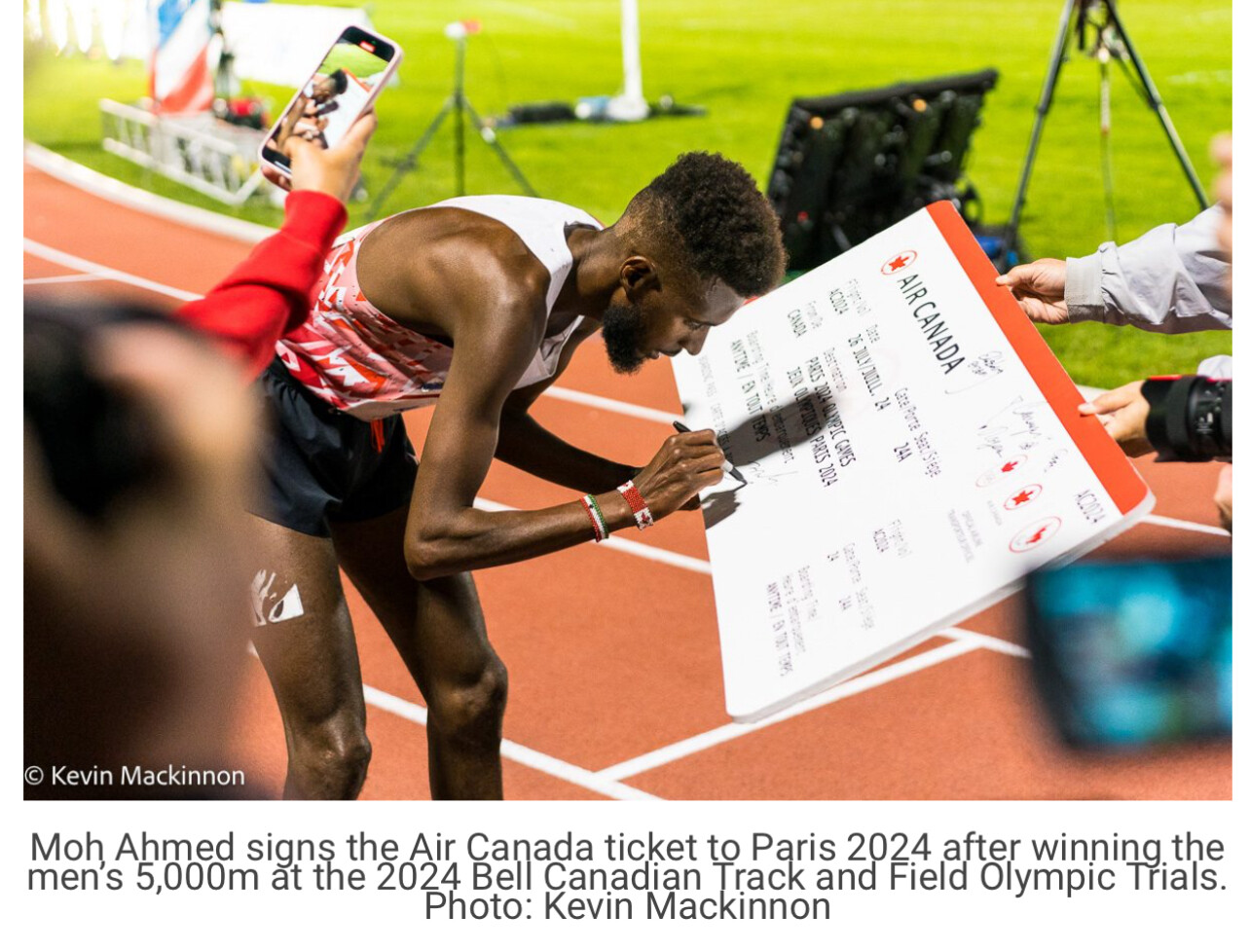
The men’s race went out at a 13-minute pace, with Fafard needing a time of 13:20 or faster to improve his Paris 2024 qualification spot in the rankings. He was paced by his teammate and newly crowned national steeplechase champion, Jean-Simon Desgagnés, for 2,000m. Once Desgagnés stepped off, Fafard kept the pedal to the metal but was unable to hold off Ahmed’s momentum in the final 1,000m.
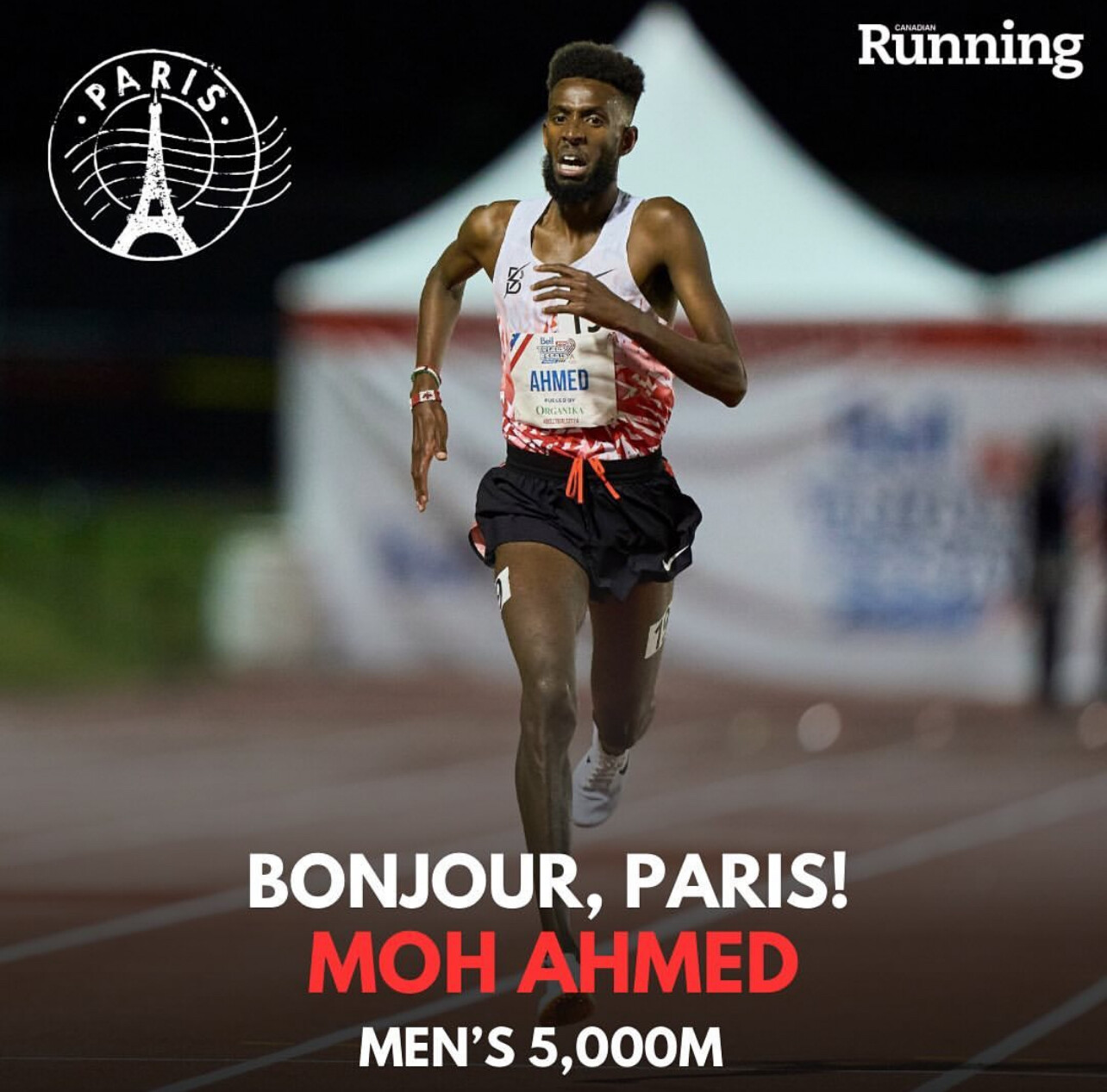
“I love this racing style,” says Ahmed. “Thomas made it an honest race.”
Moh Ahmed signs the Air Canada ticket to Paris 2024 after winning the men’s 5,000m at the 2024 Bell Canadian Track and Field Olympic Trials. Photo: Kevin Mackinnon
This is the 21st time in Ahmed’s career that he has finished a men’s 5,000m under the 13:12.00 mark—a feat every other athlete but Ahmed has only achieved six times. This is the second event he’s qualified for in Paris; he’s already been named to Team Canada in the 10,000m event.
Fafard crossed the line for second place ahead of Ben Flanagan in 13:18.02—the second-fastest time of his career. Flanagan rounded out the podium in 13:29.42. Earlier this season, Fafard missed the Olympic standard in the 5,000m by seven one-hundredths of a second, running 13:05.07. He currently sits inside the World Athletics Paris 2024 selection quota, but things can still change between now and when the window closes on Sunday, June 30.
(06/28/24) Views: 105Sawe targets next year's Boston Marathon after ruling 10k
Prague Half Marathon champion Sabastian Sawe is setting his sights on the 42km race as he sets his target on next year's Boston Marathon on April 21.
This comes after the 29-year-old's impressive victory at the Boston 10K Road Race on Sunday, where he clocked 27:42.
Wesley Kiptoo (27:53) and World Half Marathon silver medallist Daniel Ebenyo (27:55) claimed second and third respectively.
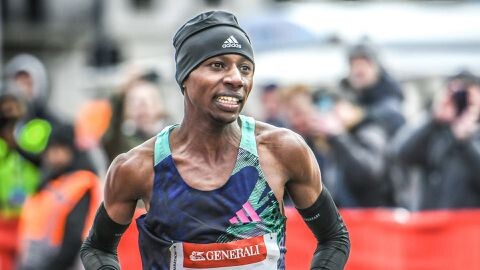
In the women's elite race, Ethiopians swept the podium as Melknat Wudu (31:15), Bosena Mulatie (31:16) and Senayet Getachew (31:17) took the top three slots.
Kenya’s Irene Cheptai (31:19), Stacy Ndiwa (31:20), Sarah Chelagat (31:27), and Daisy Jepkemei (31:39) followed in that order.
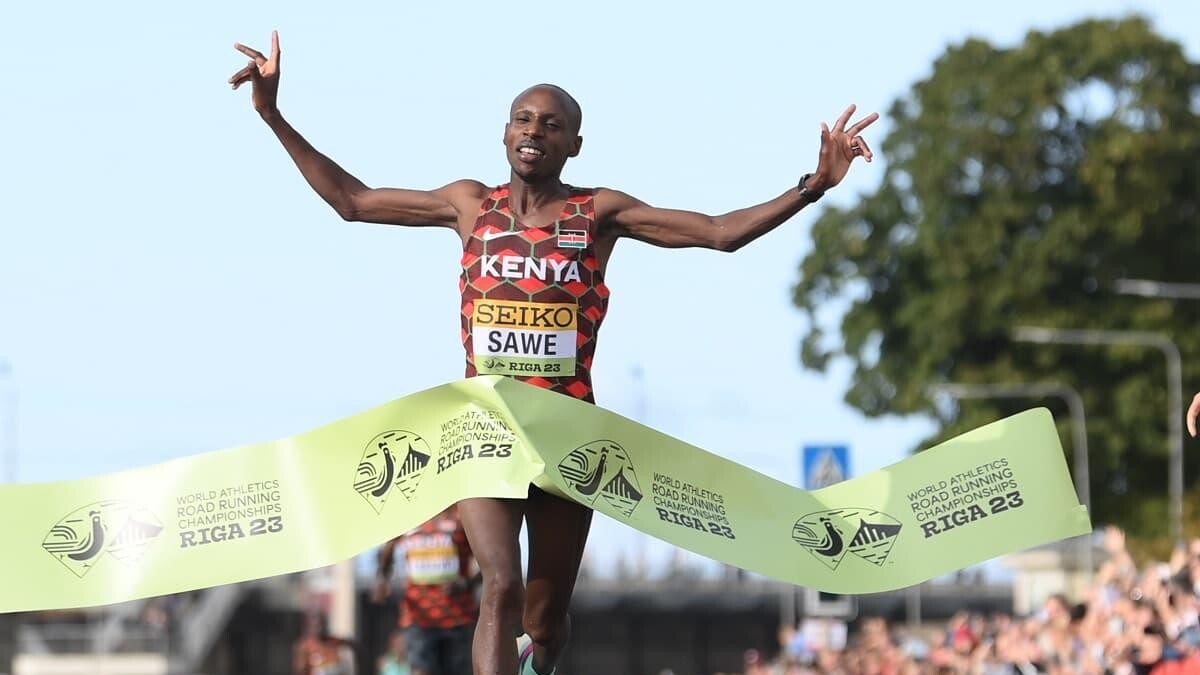
After stamping authority in his first race in the United States, Sawe stated he harbours ambitions of taking part in the Boston Marathon.
“My dream now is to take part in the Boston Marathon,” Sawe stated.
Sawe, primarily a half marathon and road race specialist, boasts an impressive resume including the Prague Half Marathon title which he won on April 6 in a time of 58:24.
He also holds a title from last year’s Berlin Half Marathon (59:00) as well as the 2022 Bahrain Half Marathon (58:58).
Sawe also won the World Road Running Championships half marathon title in Riga, Latvia, where he clocked 59:10. Ebenyo (59:14) and Samwel Nyamai (59:19) finished second and third.
He secured gold at the Adizero Road to Records 10K last April with a time of 26:49 and has a silver medal from the 2022 edition, clocking 27:06 behind Nicholas Kipkorir (27:05).
His other accolades include victories at the 2022 Roma (58:02) and Seville Half Marathons (59:02), and gold at the Gold Gala Fernanda in the 10,000m (27:09.46).
Reflecting on his Boston performance, Sawe said the course was fair despite too much rain.
“The course was not tough. The weather, however, made it difficult but I was able to do my best and come out with the victory,” he stated.
After hitting the halfway mark in 13:52, Sawe broke away from the leading pack of five which included Ebenyo, Kiptoo, Ethiopia’s Yemane Haileselassie and Abel Kipchumba.
“This was my first time running the Boston 10km Road race. The race was amazing and I had prepared adequately for it,” Sawe commented.
In addition to the winner’s trophy, Sawe also took home Sh1.3 million in cash prize money.
(07/01/24) Views: 105Teddy Mulei
Boston Marathon's logo refresh leaves some unhappy
Back in 1890, the Boston Athletic Association chose the mythical unicorn to be its symbol. Later named Spike, that unicorn saw several redesigns in the ensuing century, before eventually finding its way to prominent placement on the Boston Marathon medal. For years, Spike faced leftward, its horn jutting into the banner type of Boston Athletic Association (B.A.A.). Then in early June, Spike changed course.
The B.A.A. unveiled a new logo for the Boston Marathon, and people are not happy about it.
On its face, the redesign is small: Spike’s orientation is flipped, and he’s made a bit more menacing. The marathon logo, along with the new Spike, sports a fresh Bank of America sponsorship tag. Despite the small tweaks, the community response has been staggering: a recent Boston.com reader poll found 55% not liking the new logo, compared to just 14% loving it and 32% expressing indifference.
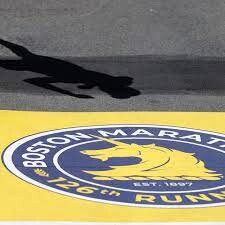
Why the backlash? The B.A.A. proves just how hard it is to stay fresh (and funded) while maintaining a sprawling, legacy-minded audience. Change, for some proud marathoners, is hard.
SMALL CHANGES, BIG REACTIONS
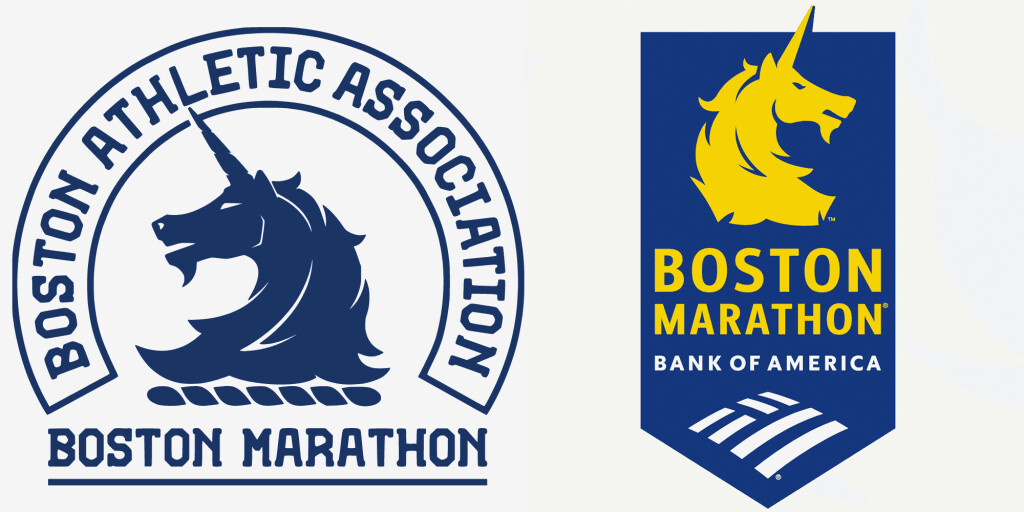
The most obvious change in Spike’s design is his orientation. Where the unicorn mascot used to look left, now he looks right. The B.A.A. calls this looking “forward,” pointing towards the miles ahead.
“We are looking forward, looking towards the future of the Boston Marathon, looking towards the future of running in general,” says Scott Stover, chief marketing officer at B.A.A. “Turning Spike around seemed natural as we were entering this next era.”
More controversial is Spike’s “athletic jawline,” which curves into the chin where it previously ran smooth. It creates the brief illusion of muscles—which the B.A.A. says represents the “athletic and gritty nature of Boston.” Coupled with a more “determined eye,” the unicorn may just be a fiercer version of his former self. Alex Cyr, a sports journalist covering marathons, finds this change laughable.
“The unicorn looks like it went from Pony[ta] to Rapidash,” Cyr says, referencing the Pokemon evolution. “You just see a unicorn that’s gotten a lot meaner.”
Stover contests the claim that Spike has gotten meaner, instead noting that they instituted these design changes to make Spike “serious and intentional.”
THE QUESTION OF CORPORATE BRANDING
Alongside the redesigned Spike, the new Boston Marathon logo also features a stamp of corporate marketing: the big “Bank of America” subtext, as well as the bank’s logo. While the fiercer appearance has some runners confused, the corporate branding has incited more anger.
Back in 1890, the Boston Athletic Association chose the mythical unicorn to be its symbol. Later named Spike, that unicorn saw several redesigns in the ensuing century, before eventually finding its way to prominent placement on the Boston Marathon medal. For years, Spike faced leftward, its horn jutting into the banner type of Boston Athletic Association (B.A.A.). Then in early June, Spike changed course.
The B.A.A. unveiled a new logo for the Boston Marathon, and people are not happy about it.
On its face, the redesign is small: Spike’s orientation is flipped, and he’s made a bit more menacing. The marathon logo, along with the new Spike, sports a fresh Bank of America sponsorship tag. Despite the small tweaks, the community response has been staggering: a recent Boston.com reader poll found 55% not liking the new logo, compared to just 14% loving it and 32% expressing indifference.
Why the backlash? The B.A.A. proves just how hard it is to stay fresh (and funded) while maintaining a sprawling, legacy-minded audience. Change, for some proud marathoners, is hard.
Alongside the redesigned Spike, the new Boston Marathon logo also features a stamp of corporate marketing: the big “Bank of America” subtext, as well as the bank’s logo. While the fiercer appearance has some runners confused, the corporate branding has incited more anger.
Just look at the Instagram comments under the announcement: “The big difference is adding Bank of America to the logo which clearly no one likes,” comments one marathoner. “Makes me less likely to bank with BoA,” comments another. Clearly, there is some ire for this emblazoned corporate sponsorship.
“Bank of America is invested in helping us continue to make the Boston Marathon and all of our events greater and greater every year,” Stover says. “So we’re proud of that partnership, and it is also very standard in sports marketing for brands to be included.”
This isn’t the first time the B.A.A. found themselves in hot water for the Bank of America branding. Back in April, the Boston Marathon debuted a new medal, featuring the bank’s logo on each and every medallion. The criticism was immediate.
Cyr was in Boston for the new medal’s premiere, and notes that there were “a few complaints.” He chalks this up to the race’s legacy: “[When] a race that’s been around for a long time, comes out with a rebrand, it is met with a bit of resistance by the traditionalists.”
The challenge that comes with rebranding an institution as beloved as the Boston Marathon is. balancing pride with progress. Marathoners complain of Spike’s fiercer look not because of any apparent flaw, but because they’ll have outdated tattoos. They complain of the Bank of America-themed logo not because they want to run the B.A.A. dry, but because they want to keep it pure. Eventually, the redesigned logo will become a piece of the Boston Marathon’s legacy; until then, the B.A.A. might have to endure some angry comments.
(07/01/24) Views: 104henry Chandonnet


